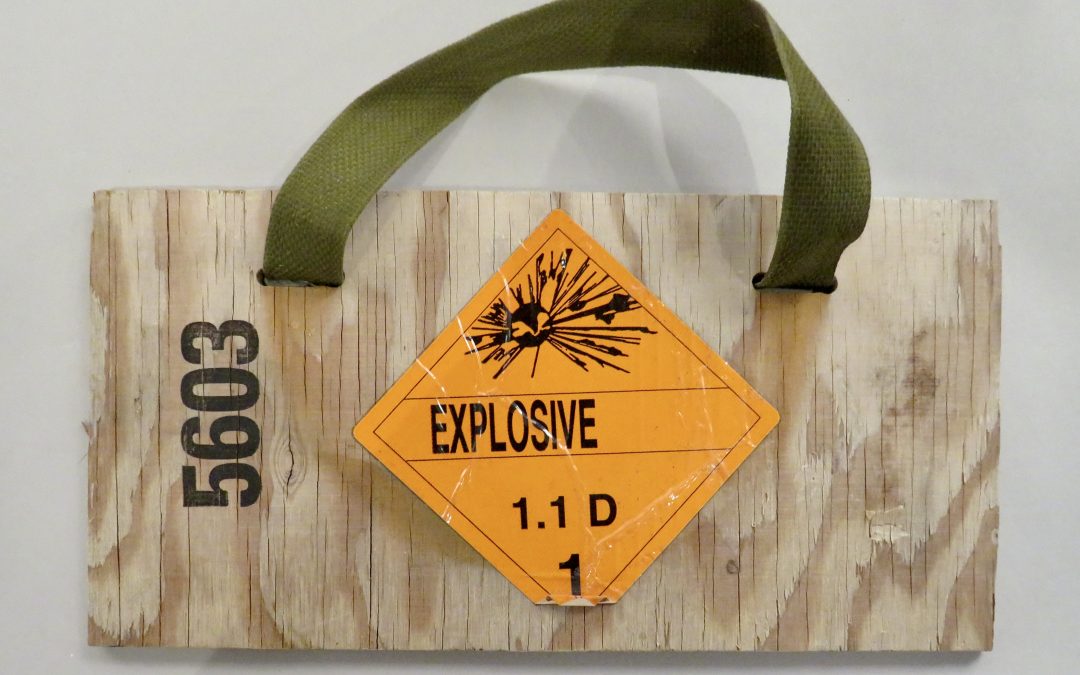(8/25)
August is Archaeology Month!
To kickstart this month dedicated to celebrating archaeological heritage and to continue highlighting 25 artifacts from within our collections for our 25th anniversary, we are featuring a piece of an explosives box from our Lost Nuke exhibit.
The lost nuke is the story of a B–36B aircraft that crashed in British Columbia in February of 1950. The B-36 aircraft was the world’s first true intercontinental bomber that carried both conventional and nuclear bombs from the United States to Europe. It was built in July of 1949 and had only flown for a total of 186 hours — which is the equivalent to approximately one week — prior to its crashing. The crashed bomber was first discovered in 1953, and after three unsuccessful attempts by the US Air Force to reach the crash site, they finally reached it in 1954. Given that this bomber carried several Cold War secrets, the US Air Force was tasked with obscuring and destroying the technology on board that otherwise could have been exploited by the USSR. In 1997, the Canadian Forces flew to the crash site to look for radiation, which ultimately was not detected, and to detonate the explosives that were either lost or left behind from the 1954 mission. Following this, in 2003, the Canadian government ordered an archaeological expedition in order to document the site, examine the wreckage, and collect artifacts.

Explosives Box Piece, Diefenbunker Museum: 2004.002.023
The archaeological expedition that led to the discovery of this explosives box piece was done by researchers with nuclear-based and aviation-based interests and perspectives. The individual who headed the team on behalf of the Diefenbunker: Canada’s Cold War Museum was Dr. John Clearwater, a nuclear weapons specialist who was a significant donor and contributor to the museum and its collections. Dr. Clearwater curated and supplied many artifacts from this expedition, including this explosives box piece, that are currently on display in the Diefenbunker’s Lost Nuke exhibit.
This piece in our collections is a side panel of an explosives box. It is rectangular in shape and constructed of wood, and has a green fabric strap affixed at the top. The number “5603” is printed in black on the far left side. An orange diamond-shaped warning sticker is centered on the panel. This weathered sticker displays the explosive pictogram at the top and text saying “explosive” and “1.1 D” underneath.
Archaeology is the understanding of the entire life of an artifact rather than just the study of it in isolation. Archaeology not only seeks to provide information on an individual artifact, but it also encapsulates the whole story of the artifact and the circumstances and people involved. Through collecting and preserving archeological items, we can connect material remains of the past with important stories like that of the lost nuke — stories that help increase our understanding of a critical period in recent world history.
Join us this August for Archaeology Month and stay tuned as we continue to celebrate our 25th anniversary by uncovering more stories from our museum’s collections.
